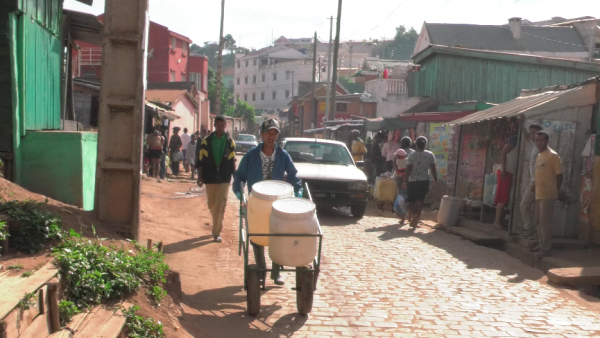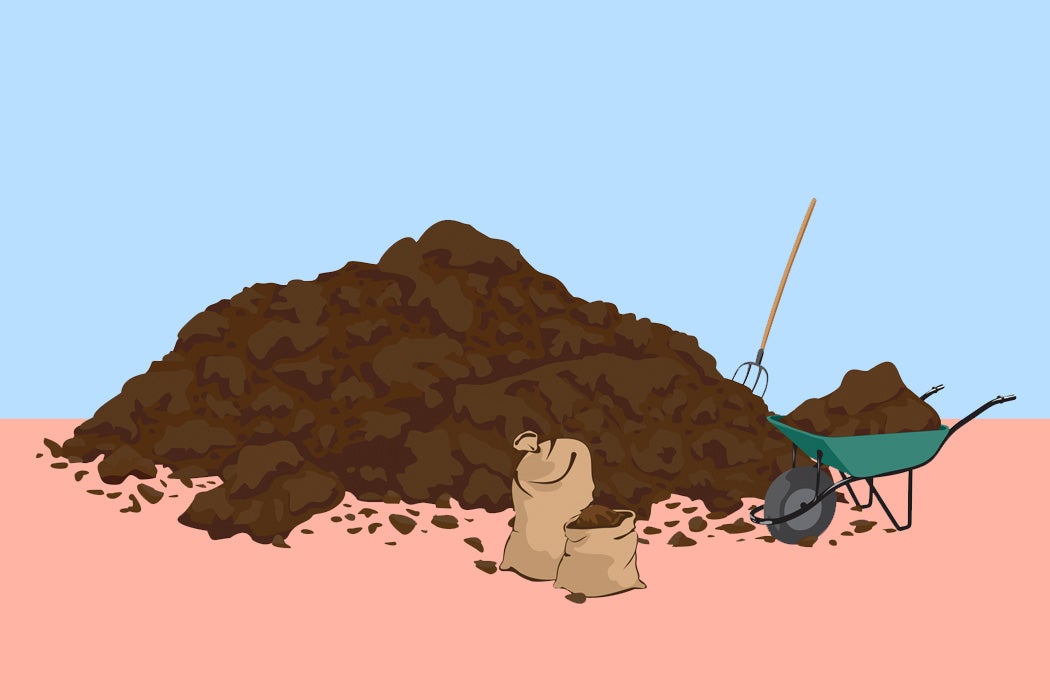It was the summer of 1724, and two groups of Japanese villages were arguing over a sewage issue in Osaka. The dispute was about waste removal, but not quite in the way one would imagine. The villages weren’t arguing about whose job it was to dispose of the filth, but rather about who had the rights to collect it, keep it, and use it. Notably, the village residents didn’t consider the substance filth. They used a special term, night soil, to describe the product they were after. And they were in dire need of it.
In the twenty first century, sewage is something of a hot potato: No one wants it. Western civilizations have built expansive sewage systems, with miles of pipes underneath cities, to carry it far away. Over the past century, they’ve constructed sophisticated mechanisms of purifying water before releasing it back into the environment and annihilating or disposing the so-called biosolids. Industrialized societies have spent billions of dollars perfecting sanitation systems that remove our waste quickly and efficiently—and keep it as far away from us as possible.
There are valid reasons for it. When left untreated, fecal matter leaches into lakes and rivers, contaminating drinking water and causing disease outbreaks, including cholera, dysentery, and polio, along with intestinal worms and other parasites. The lack of proper sanitation facilities and treatment plants remains one of the biggest challenges of the developing world. According to a report from the American Society of Microbiology, researchers estimate the burden of gastrointestinal disease in developing countries at more than 26 billion cases per year.
Yet, in eighteenth century Japan, biosolids were an esteemed substance. Japanese citizens did not view human waste as unwanted muck, but rather as something of value. What fostered this view, so different from ours? The answer lies in the soil. Compared to many European and North American countries, blessed with an abundance of forests and fertile grounds, Japan had much less land that was suitable for agriculture. Large parts of Japan had soils that were sandy and low on nutrients. Without continuous fertilizing, they didn’t yield rich harvests. When the Japanese population began to grow, people needed more food—and farmers needed fertilizer to produce it. Ultimately, it was the citizens who produced the fertilizer that put the food on the table. Population dynamics, particularly in large cities like Osaka and Edo, which later became Tokyo, drove up the value of human excrement, which sometime is referred to as humanure.
The historian Susan B. Hanley writes that in the early years of the Tokugawa regime, a historical period that lasted more than 200 years, farmers sent boats to Osaka packed with vegetables and other produce—and in return they received the city’s night soil. But then the fertilizer prices climbed—and the night soil became a prized item. As its price went up, different organizations and guilds, which had the rights to collect night soil from specific areas of the city, began to form.
In Osaka, landlords had the rights to their tenants’ solid waste, but the renters retained the rights to their urine, which was considered to be of lesser value. By the early eighteenth century, night soil was highly coveted. The price of the fecal material from ten households per year was valued between two and three bu of silver or over one half a ryo of gold. Put in perspective, one ryo could buy enough grain to feed one person for one year.
The groups wanted to keep their monopolies on waste collection, so occasionally fights and disputes would break out. According to Japanese records, such tiffs happened more than once. Moreover, as prices surged, the less fortunate farmers, who couldn’t afford to buy the precious manure, sometimes would steal it. Stealing excrement was a crime punishable by law, carrying a penalty that included prison time.
The excremental bull market had a very positive effect on cities’ overall cleanliness. Because every drop of waste was gathered and used, Japanese cities did not have a problem with overflowing latrines, stinky street gutters, or other sanitation issues that plagued urban Europe at the time. In the eighteenth century, European cities were filthy. In Berlin, city waste was piled up in front of St. Peter’s Church until a law passed in 1671 obligated peasants who came to town to take a load home on every visit. London was infamous for its mucky streets and overflowing public latrines. In Denmark, the cleaning of the latrines was the job of the hangman. Paris, famous for its art and culture scene, was nonetheless infamous for its filth. The wealthier Parisians emptied their chamber pots out the window, and poorer ones relieved themselves wherever possible. Even the Louvre was a mess: its inhabitants used its stairs and balconies as toilets.
In some European locales, night soil collectors cleaned latrines or picked up chamber pots, but overall, the business never really took off. Europeans saw little value in their excrement. They viewed it as disgusting muck they had to pay for to get rid of. They had enough rich soil, often fertilized with animal manure, so few farmers wanted to go an extra mile to gather the city’s waste. And as urban sprawls grew, the distance from cities to farms also grew, complicating things further. And so the filth kept accumulating on the streets, causing the infamous disease epidemics that periodically swept through Europe (but that seemed to largely spare Japan). In fact, Japan’s night soil collection approach worked so well that it continued into the 1980s, gathered by special vacuum trucks and delivered to treatment facilities.
Rethinking Sanitation
It was the disease epidemics and the overall unhygienic state of urban life that led Western nations to build and continuously improve sanitation systems. But while sewage systems and treatment plants rid us from the parasitic infections and disease outbreaks, they introduced other problems. In places where sewage was dumped into the oceans, it polluted the waterways. In areas where the water was treated and released, but biosolids were burned, the smoke polluted the air. And even the purified water has problems. While it’s free from pathogens, it still contains various chemicals naturally present in human sewage, including hormones and antibiotics. It is also very high in nitrogen and phosphorus—the two types of fertilizer naturally found in humanure. When this water flows into lakes, rivers, and oceans, it causes eutrophication—an over-fertilization of waterways, leading to algae blooms that kill marine life.
As a short-term solution, Western sanitation saved millions of lives, but in the long term, it may prove to be far from ideal. It is also expensive and resource intensive. It requires large amounts of water, complex machinery, and energy, which is typically derived from fossil fuels. In many places in the developing world, such systems can’t be built. Can humankind devise a better sanitation solution, one that combines the benefits of Western sanitation and Japanese sewage recycling?

New startup technologies aim to do exactly that. Sanivation, a company based in Naivasha, Kenya, developed a method that converts sewage into a fuel—an alternative to charcoal. Sanivation mixes feces with various agricultural refuse or sawdust from grinding mills—and then heats up the amalgam to fuse it into burnable briquettes and logs. Depending on the exact formula, the sewage-derived fuel burns like firewood or charcoal, which most of Kenya’s population cooks with. The approach not only converts waste into value, creating a circular economy, it also reduces the amount of trees that otherwise would be cut for fuel.
Sanivation’s collection service is somewhat similar to that of eighteenth century Japan, albeit more hygienic. The company supplies residents with simple toilets that accumulate waste in tightly closed containers regularly picked up by Sanivation’s service. As they move from house to house, the collectors wear masks and gloves—and deliver the sealed containers to the processing facility.
Weekly Newsletter
Other startups are finding different ways to convert waste into value. Using a similar manual collection method, UK-based company Loowatt operates its Madagascar-based waste collection system, turning excrement into fertilizer and biogas—a form of natural gas that can be burned for energy. Sanergy, based in Nairobi, Kenya’s capital, used human waste to grow the larvae of black soldier flies—which can be turned into protein-rich fodder for animals. And in Haiti, a company called Sustainable Organic Integrated Livelihoods or SOIL composts waste in manner similar to the Japanese farmers—and then uses it to enrich the country’s depleted lands.
Can similar methods be implemented in Western cities? Manual collection of sewage containers may sound far-fetched, but eco-friendly alternatives to industrial sanitation do exist. In 2007, New York City’s Bronx Zoo built an eco-toilet that uses 99 percent less water than a standard one. It composts its output into fertilizer with barely any smell, which works even better than the old Japanese method. In Osaka, the odors were a problem. The boats that came to the city’s harbor to gather night soil and carry it to the farmland often caused an unpleasant stink—bad enough that the residents complained. Their grievance, however, was overturned by the magistrate. The authorities decreed that it was “unavoidable for the manure boats to come.” If Osaka’s people wanted to have food on the table, they had to deal with the results of their digestion.
Support JSTOR Daily! Join our new membership program on Patreon today.







